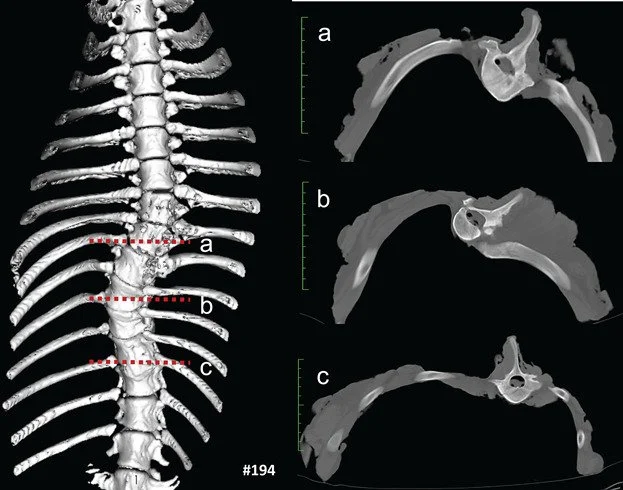Understanding Spinal Deformity in Scoliosis
Adolescent idiopathic scoliosis (AIS) is a complex condition that affects the spine during its critical growth phase in adolescence. Understanding how the vertebrae deform in this condition is crucial for early diagnosis and effective treatment. In this article, we'll explore the intricacies of vertebral deformation in AIS and its impact on the growing spine.
What is Adolescent Idiopathic Scoliosis?
AIS is the most common form of scoliosis, occurring in children. The term 'idiopathic' means that the exact cause of the curvature is unknown, although it's believed to involve genetic and environmental factors. Scoliosis is characterized by an abnormal, lateral curvature of the spine, which can progress rapidly during periods of rapid growth. When there is deformation of the vertebrae, the scoliosis will progress even more rapidly.
Spinal Deformation in AIS
The hallmark of AIS is the deformity of the spine, which manifests in several ways:
1. Lateral Curvature: The most apparent deformity in AIS is the sideward bending of the spine. Unlike normal spinal curves, which are front-to-back, this curve is side-to-side and can be seen when viewing the individual from behind. This is not a deformity of the vertebrae itself, but a deformity in the normal position of the spine.
2. Rotation: Along with the lateral curvature, the vertebrae also rotate. This rotation can cause one side of the ribcage to stick out more than the other, a phenomenon known as rib hump. The ribs themselves can also become deformed due to this vertebral rotation.
3. Wedge-shaped Vertebrae: In more severe cases of AIS, the vertebrae can become wedge-shaped. One side of the vertebrae becomes compressed while the back part remains normal height, exacerbating the curvature. When this is found, rapid progression is expected. Immediate treatment is even more important in these children.
4. Asymmetrical Growth: The growth of the vertebrae in AIS patients is often asymmetrical. One side of the vertebrae might grow faster than the other, leading to an imbalance that contributes to the curvature. This is similar to the wedge shaped except it also relates to elongation on one side and shortening of the other.
The deformities caused by AIS can have significant impacts on the growing spine:
Postural Changes: As the spine curves, there can be visible changes in posture. The shoulders or hips may appear uneven, and the entire torso can lean to one side.
Reduced Mobility: Severe curvatures can limit the range of motion and flexibility of the spine, affecting physical activity.
Respiratory Issues: In extreme cases, the curvature can compress the lungs and reduce their capacity, leading to breathing difficulties.
Psychosocial Impact: Adolescents with visible spinal deformities can experience psychological stress, body image issues, and social challenges.
Diagnosis and Treatment
Early detection of AIS is vital for effective management. Regular screening during adolescence by a ScoliCare certified provider, especially for those with a family history of scoliosis, is recommended. Treatment options vary depending on the severity of the curvature and may include:
Observation: Regular monitoring for minor curvatures. Typically a cobb angle of 15 degrees or less. This varies from patient to patient and all curves should be assessed by our team.
ScoliBracing: Wearing a brace can help prevent further curvature in moderate cases. Our 3D, custom designed ScoliBraces are built to reduce or straighten the scoliosis.
Surgery: Severe cases might require surgical intervention to correct and stabilize the spine. The vast majority of cases though can at least attempt non-surgical scoliosis treatments.
In conclusion, adolescent idiopathic scoliosis is a complex condition that significantly impacts the growing spine. Understanding the nature of vertebral deformities in AIS is crucial for early detection, proper management, and minimizing its impact on the quality of life. Advances in medical research continue to improve our understanding and treatment of this condition, offering hope for affected adolescents and their families.
We are your trusted partner in the journey towards a pain-free and healthy lifestyle. We believe that a pain-free life is within reach for everyone, and we are here to guide you on the path to optimal health and wellness through a personalized treatment plan. Let’s get started.

